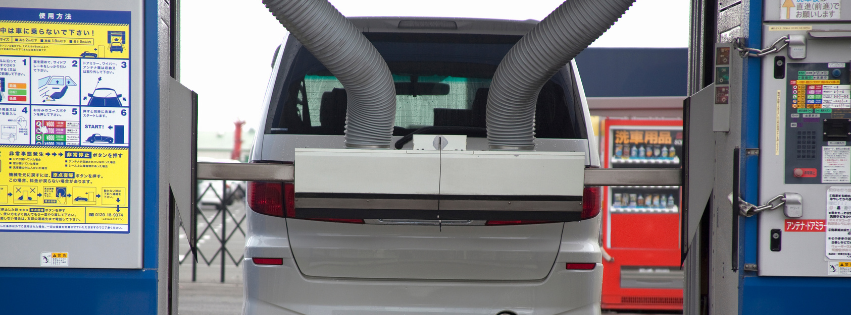Car Wash Installation: Setting Up Your Car Wash Business for Long-Term Success
From Planning to Opening Day — A Step-by-Step Guide to a Profitable Car Wash Setup

Starting a car wash business is one of the smartest investments you can make in today’s fast-paced world. As more vehicles hit the roads, the demand for quality, efficient, and eco-friendly car wash services continues to rise. But success doesn’t happen by chance — it begins with a proper car wash installation.
Whether you’re starting from scratch or upgrading an existing setup, a well-planned installation ensures operational efficiency, reduced downtime, and maximum profitability. In this guide, we’ll walk you through the essentials of car wash installation, from site selection and equipment setup to long-term maintenance and compliance.
Step 1: Plan Your Car Wash Installation Strategically
Before breaking ground, define your car wash business model — self-service, automatic, or full-service. Each has different space, water, and equipment requirements.
For instance:
- Self-service car washes are cost-effective and require minimal staffing.
- Automatic in-bay washes suit gas stations or smaller lots.
- Tunnel systems are ideal for high-traffic areas, offering faster throughput and greater profit potential.
Conduct a feasibility study to evaluate traffic patterns, local competition, and accessibility. Sites near malls, office complexes, or residential communities often guarantee a steady flow of customers.
Tip: Use resources like CarWash.com or International Carwash Association to explore the latest trends and installation best practices in the industry.
Step 2: Choose the Right Equipment and Layout
Your choice of car wash equipment defines the customer experience. Poorly chosen or installed machinery can result in inconsistent cleaning and higher maintenance costs.
Partnering with a reputable supplier such as Car Wash Management ensures you get durable, efficient, and industry-tested equipment. From high-pressure sprayers and foam brushes to automatic dryers and water reclaim systems, every component should be installed for optimal flow and ease of use.
When planning your car wash layout, consider:
- Entrance and exit flow: Keep the vehicle path intuitive and free of congestion.
- Utility placement: Water lines, power sources, and drainage should follow a clean and organized layout.
- Safety: Include anti-slip flooring, proper signage, and emergency shut-offs.
Step 3: Hire Professionals for Installation
Installing a car wash isn’t a simple DIY project. It requires precision, compliance with local building codes, and expertise in mechanical, electrical, and plumbing systems.
Professional installation teams ensure that each component — from pumps and conveyors to reclaim tanks and chemical lines — is correctly fitted, calibrated, and tested. This not only prevents operational delays but also extends equipment lifespan.
Car Wash Management offers full-service installation and site analysis, helping you avoid costly mistakes during construction. Their experienced consultants evaluate your space, recommend the right setup, and oversee the installation to completion.
Step 4: Integrate Water Reclamation and Eco-Friendly Systems
Sustainability is no longer optional — it’s a business advantage. Modern car washes can recycle up to 80% of their water using reclaim systems that filter and reuse water without compromising cleanliness.
Installing water reclamation systems and low-flow nozzles not only helps the environment but also saves thousands on monthly utility bills. Additionally, energy-efficient lighting and biodegradable detergents improve your eco-credentials and attract environmentally conscious customers.
Learn more about sustainable practices in car wash operations in our article on How to Reduce Your Car Wash’s Water Use.
Step 5: Ensure Compliance and Safety
Every car wash installation must comply with local environmental, electrical, and zoning regulations. Failure to secure permits or adhere to wastewater disposal standards can delay opening or result in fines.
Before you start construction, coordinate with local government offices to secure:
- Business permits and licenses
- Water discharge permits
- Environmental compliance certificates (ECC)
Also, prioritize workplace safety. Train staff to handle chemicals properly and ensure all equipment has safety labels and emergency protocols.
Step 6: Test, Launch, and Maintain
Once the installation is complete, run multiple test washes to check pressure balance, water flow, and drying efficiency. Adjust settings until you achieve consistent, spotless results.
After the launch, schedule regular maintenance checks. Routine inspection of pumps, conveyor belts, and filters prevents breakdowns and prolongs your investment’s life.
You can explore our comprehensive Car Wash Maintenance Guide for preventive care and troubleshooting tips.
Step 7: Partner with a Car Wash Consultant
If you want to eliminate guesswork, work with an experienced car wash consulting firm. Consultants can assist with feasibility studies, design optimization, financial modeling, and staff training.
Car Wash Management provides end-to-end consulting, from planning and installation to ongoing operations. Their expertise helps you save costs, reduce water usage, and achieve long-term profitability.
Final Thoughts
A successful car wash installation is more than assembling equipment — it’s about building a seamless, efficient, and sustainable system that keeps customers coming back. From choosing the right site and equipment to ensuring compliance and maintenance, each decision shapes your business’s performance and reputation.
By working with experts like Car Wash Management, you ensure every aspect of your installation is optimized for success — clean cars, satisfied customers, and a strong bottom line.
